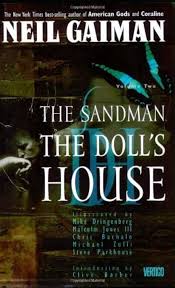
Introduction
The Sandman, a captivating fantasy series originally created by Neil Gaiman in the late 1980s, has left an indelible mark not only on the comic book industry but also on the wider realms of literature and television. As we navigate through a cultural landscape that increasingly values fantasy narratives, the significance of The Sandman is more relevant than ever. Its adaptation into a Netflix series has brought renewed attention to the story, combining timeless themes of dreams, myth, and reality.
Background of The Sandman
The Sandman debuted as a comic book series published by DC Comics’ Vertigo imprint, running from 1989 to 1996. The series follows Dream, one of the Endless, who is responsible for the realm of dreams and nightmares. Gaiman’s narrative weaves together various mythologies, historical events, and literary references, creating a rich tapestry that has resonated deeply with readers. The character and story have influenced countless creators and adapted works, highlighting its broad cultural impact.
The Netflix Adaptation
In August 2021, Netflix premiered its highly anticipated adaptation of The Sandman, receiving commendation from both critics and fans for its fidelity to the source material and high production values. The series, featuring Tom Sturridge as Morpheus (Dream), has been praised for its stunning visuals and deep narrative fidelity. It encapsulates the complex themes of mortality, love, and the existential nature of dreams while introducing Gaiman’s intricate storytelling to a new generation.
Cultural and Artistic Significance
The Sandman’s influence extends beyond entertainment; it invites audiences to explore philosophical questions about existence, identity, and the interplay between reality and dreams. The comic series was groundbreaking in its approach to characters and storytelling within the medium, particularly by depicting emotional depth and complex narratives that had often been overlooked in traditional superhero comics. With the adaptation, new discussions around mental health, the human experience, and the importance of stories in shaping our realities have emerged.
Conclusion
As The Sandman continues to gain traction in popular culture through its adaptation and ongoing discussions around its themes, it demonstrates the power of storytelling to reflect human experience and provoke thought. Its blend of fantasy and reality makes it relevant in today’s society, where escapism often meets the desire for deeper understanding. As audiences await news of future seasons, it is evident that The Sandman will maintain its position as a transformative piece of art, inspiring both viewers and readers alike to question the boundaries of their dreams and realities.



